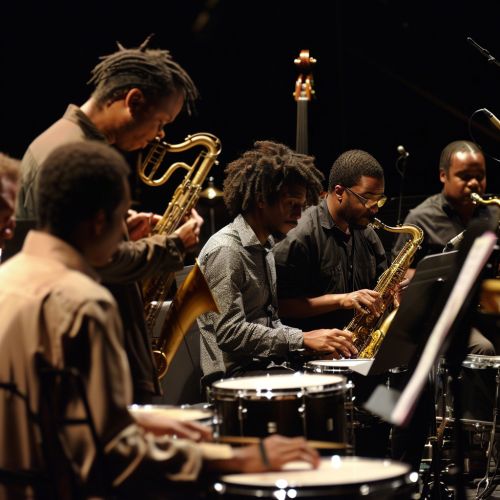Free Jazz
Origins and Early Development
Free jazz, also known as avant-garde jazz, emerged in the mid-20th century as a radical departure from the established norms of traditional jazz. It is characterized by its disregard for traditional harmony and structure, instead favoring improvisation and collective musical expression.
The origins of free jazz can be traced back to the 1940s and 1950s, when musicians such as Ornette Coleman and Cecil Taylor began to push the boundaries of traditional jazz. They experimented with new forms of musical expression, including atonality, polyrhythms, and non-traditional instrumentation.


Characteristics
Free jazz is defined by its lack of formal structure and emphasis on collective improvisation. Unlike traditional jazz, which is based on predetermined chord progressions and melodic structures, free jazz musicians create their music in the moment, often without a predetermined plan or structure.
This approach to music-making is often described as "collective improvisation," a term that refers to the spontaneous creation of music by a group of musicians. In free jazz, all members of the ensemble are equal contributors to the musical conversation, with no single musician or instrument taking precedence over the others.
Influences and Evolution
Free jazz was heavily influenced by the social and political climate of the mid-20th century. Many free jazz musicians were deeply involved in the civil rights movement and used their music as a form of protest and expression of cultural identity.
Over time, free jazz has evolved and diversified, incorporating elements from other musical genres such as rock, funk, and world music. This has resulted in a wide variety of sub-genres and styles within the broader category of free jazz, including free funk, free bop, and free improvisation.
Impact and Legacy
Despite its radical departure from traditional jazz, free jazz has had a profound impact on the broader musical landscape. Its emphasis on improvisation and collective musical expression has influenced a wide range of musicians and genres, from rock and pop to classical and electronic music.
While free jazz is not as commercially popular as other forms of jazz, it has a dedicated following and continues to be performed and recorded by musicians around the world. Its legacy can be seen in the work of contemporary musicians who continue to push the boundaries of musical expression and challenge the conventions of traditional music-making.
